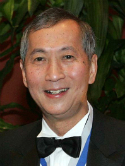| Abstract: |
Based on the linear-quadratic model, we perform calculations to compare the possible radiobiologic results achieved with permanent implants using Au-198, Pd-103, and I-125. We examine the influence of the radiobiophysical parameters (i.e. α, β, SLD repair kinetics, tumor doubling time (Tp), tumor growth delay, and prescribed dose) on the calculated radiobiologic indices or endpoints. The radiobiologic indices or endpoints include the effective treatment time (Teff) (beyond which the additional dose delivered is wasted), the biologically effective dose (BED), and cell surviving fractions. Within the range of reported values of the various parameters, Tp is the most significant in affecting Teff, BED, and the degree of cell inactivation. The effect of Tp and Teff and BED is larger for isotopes with longer half-lives, for which the rate of tumor regrowth is more important. For Tp of 5 to 30 days, the Teff are 14 to 21 days for Au-198, 58 to 102 days for Pd-103, and 120 to 275 days for I-125. For this range of Tp, the wasted doses are < 5% for Au-198, 15 to 3°k for Pd-103, and 30 to 5% for I-125. For reference prescription doses of 60, 120, and 160 Gy for implants using Au-198, Pd-103, and I-125, respectively, the BED and the associated cell-kill is the lowest for Au-198, whereas Pd-103 and I-125 implants are more effective for fast-growth (Tp < 10 days) and slow-growth (Tp > 10 days) tumors, respectively. © 1992. |
| Keywords: |
implant; dose response; comparative study; radiation dose; neoplasms; cell survival; models, biological; dose-response relationship, radiation; iodine radioisotopes; radioactivity; brachytherapy; ionizing radiation; radiosensitivity; radioisotope; tumor growth; radioisotopes; palladium; cell killing; radioactive material; radiobiology; permanent implants; i-125; pd-103; tumor stem cell assay; priority journal; article; support, non-u.s. gov't; support, u.s. gov't, p.h.s.; x ray dose distribution; au-198; gold radioisotopes
|



